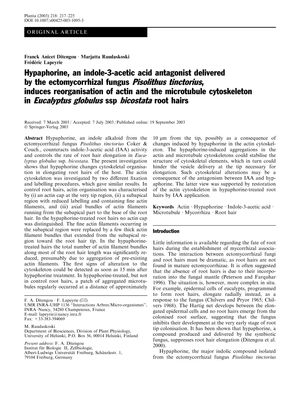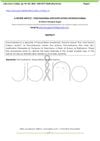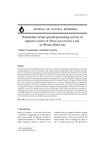Hypaphorine, an Indole-3-Acetic Acid Antagonist Delivered by the Ectomycorrhizal Fungus Pisolithus Tinctorius, Induces Reorganization of Actin and the Microtubule Cytoskeleton in Eucalyptus Globulus ssp. Bicostata Root Hairs
December 2003
in “
Planta
”

TLDR Hypaphorine from a fungus changes the internal structure of Eucalyptus root hairs, stopping their growth.
The document from December 2003 detailed a study on the impact of hypaphorine, an antagonist to indole-3-acetic acid (IAA), on the cytoskeletal structure of Eucalyptus globulus ssp. bicostata root hairs. The study demonstrated that hypaphorine treatment caused significant reorganization of the actin and microtubule cytoskeletons, including the disappearance of the actin cap, formation of thick actin bundles, and aggregation of microtubules. These changes were associated with the cessation of root hair growth and were observable as early as 15 minutes post-treatment for actin and 45 minutes for microtubules. The study also showed that IAA application could reverse the effects of hypaphorine, suggesting that root hair elongation is IAA-dependent and that hypaphorine disrupts this process by acting as an auxin activity antagonist. The exact number of root hairs or plants analyzed was not specified, but at least 100 hairs from 23 roots were observed for some measurements.


